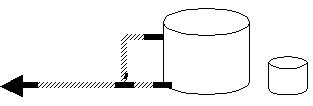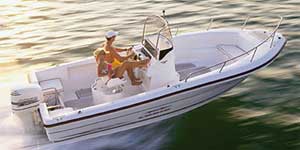Live Well With Livewells-- Part 2
Live Well With Livewells-- Part 2
 We are going to take a closer look at the components and some plumbing and installation ideas. To recap last week, the key to keeping fish alive and healthy is Clean, Cool, Oxygenated Water (CCOW). The best solution to achieve CCOW has been addressed with the use of current livewell technology. By circulating a fresh supply of water, the water in the tank will stay clean, cool and well oxygenated. We are going to take a closer look at the components and some plumbing and installation ideas. To recap last week, the key to keeping fish alive and healthy is Clean, Cool, Oxygenated Water (CCOW). The best solution to achieve CCOW has been addressed with the use of current livewell technology. By circulating a fresh supply of water, the water in the tank will stay clean, cool and well oxygenated. Start the process by determining exactly how you want to use your livewell. Do you want to transport bass for tournament fishing or keep shrimp alive for a day or two over the weekend? The amount of fish or bait you want to keep alive for a duration of time will dictate the size of your tank and also the size pump you will need to provide enough water flow. Use the one-inch of fish per gallon of water rule liberally. The more you exceed this rule, the greater the chance of losing baits. However, if you keep within the parameters of the rule, you will be amazed at how long you can keep fish alive out of their natural environment.  Look at household aquariums and a number of owners will tell you that certain fish are X years old. That is because the fish were provided with CCOW! The difference between a home aquarium and a livewell is that instead of filtering a certain volume of water that is recirculated, a livewell just keeps replacing water that becomes contaminated with fish waste. In both situations, oxygen must be added to the water and similar methods are used. Some aquarium folks can successfully grow plants in their tanks to provide oxygen, but that is not practical for a livewell. However, the use of aerator heads and air stones are very effective. One last thought, despite the fact most home aquariums have square corners, if at all possible, it is best to keep the interior of a livewell tank smooth with rounded walls. Look at household aquariums and a number of owners will tell you that certain fish are X years old. That is because the fish were provided with CCOW! The difference between a home aquarium and a livewell is that instead of filtering a certain volume of water that is recirculated, a livewell just keeps replacing water that becomes contaminated with fish waste. In both situations, oxygen must be added to the water and similar methods are used. Some aquarium folks can successfully grow plants in their tanks to provide oxygen, but that is not practical for a livewell. However, the use of aerator heads and air stones are very effective. One last thought, despite the fact most home aquariums have square corners, if at all possible, it is best to keep the interior of a livewell tank smooth with rounded walls. The most basic set-up for a livewell requires the most manual labor. Just use any container you desire along with a bucket and you can add or bail water from your livewell as you please. This is the basic system of any panga fisherman in Baja, except their livewell tank is the space in between two thwart seats. They also rig a clever overflow drain by drilling a hole in the side of the boat just above the water line. System A:
 To increase the ease of use, install a drain at the bottom of the tank so you don't have to bail the tank dry at the end of the day. At the same time add an overflow drain and you can just keep adding water when the fish need it and the tank will automatically stay at the correct level. System B:
 Next, you will probably get tired of dipping the bucket into the briny on a regular basis, and you'll eventually get the urge to add a pump to the system. If you do, then you will need to either add a DC electrical system to your boat or integrate your livewell into your boat's existing system... System C:
 You can add another pump to recirculate the water in the tank while you are running, or if you move through undesired water. Also by adding a light to the tank you will greatly increase the chances of survival for many fish species and make it easier to find the buggers when you want to catch them. Add an aerator on the inlet side and possibly an air pump and stone to increase the oxygen content. Of course this will provide basic life support, however, you can always improve upon your livewell system. You can add another pump to recirculate the water in the tank while you are running, or if you move through undesired water. Also, by adding a light to the tank you will greatly increase the chances of survival for many fish species and make it easier to find the buggers when you want to catch them. Add an aerator on the inlet side and possibly an air pump and stone to increase the oxygen content. There are some folks who don't even bother with a tank and have devised a system of pumping water up into PVC pipes. The baits are placed headfirst into the vertical pipes and the fish will keep swimming down into the current until they are retrieved. These devices are not meant to keep the baits alive for long periods of time, but are best used to hold a rigged live bait until it is needed. To find a system that works best for your needs, get out to all the marinas, boatyards, shows, dealerships, launch ramps you can find and look at boats and their livewell systems. Talk with fishermen who use the systems on a regular basis and ask for their comments. A major point to consider on your system is the placement of the tank. Always try to keep the addition of any major weight to a boat over the keel line amidships. That is not always possible, but the further you move this point, the more the boat's orientation in the water will be compromised. This can play to your advantage by using the weight of your livewell tank to offset and existing off keel weight. My first salmon boat I made the mistake of placing my batteries on the same side of the boat as the helm. When it came time to add a livewell, I knew that by placing it on the port side of the boat, the tank would balance out the battery and my weights and put me back on even keel.  There are many advantages to a livewell but the best part is that by keeping your bait alive, fresh and active, you will greatly increase your chances of catching fish. So many folk' days are ruined when all their shrimp are dead before noon. If you find yourself wondering why so many of the baits you paid so much money for are floating belly up, don't rush to blame the bait shop for the quality. Take a long look at how you store those baits and ask yourself if those fish are getting plenty of clean, cool, oxygenated water. If they are, then curse away, but if not, then take the time to plan out your new livewell system and build it before the season gets here! There are many advantages to a livewell but the best part is that by keeping your bait alive, fresh and active, you will greatly increase your chances of catching fish. So many folk' days are ruined when all their shrimp are dead before noon. If you find yourself wondering why so many of the baits you paid so much money for are floating belly up, don't rush to blame the bait shop for the quality. Take a long look at how you store those baits and ask yourself if those fish are getting plenty of clean, cool, oxygenated water. If they are, then curse away, but if not, then take the time to plan out your new livewell system and build it before the season gets here! Until next time,
Keep your bait fresh! 
|